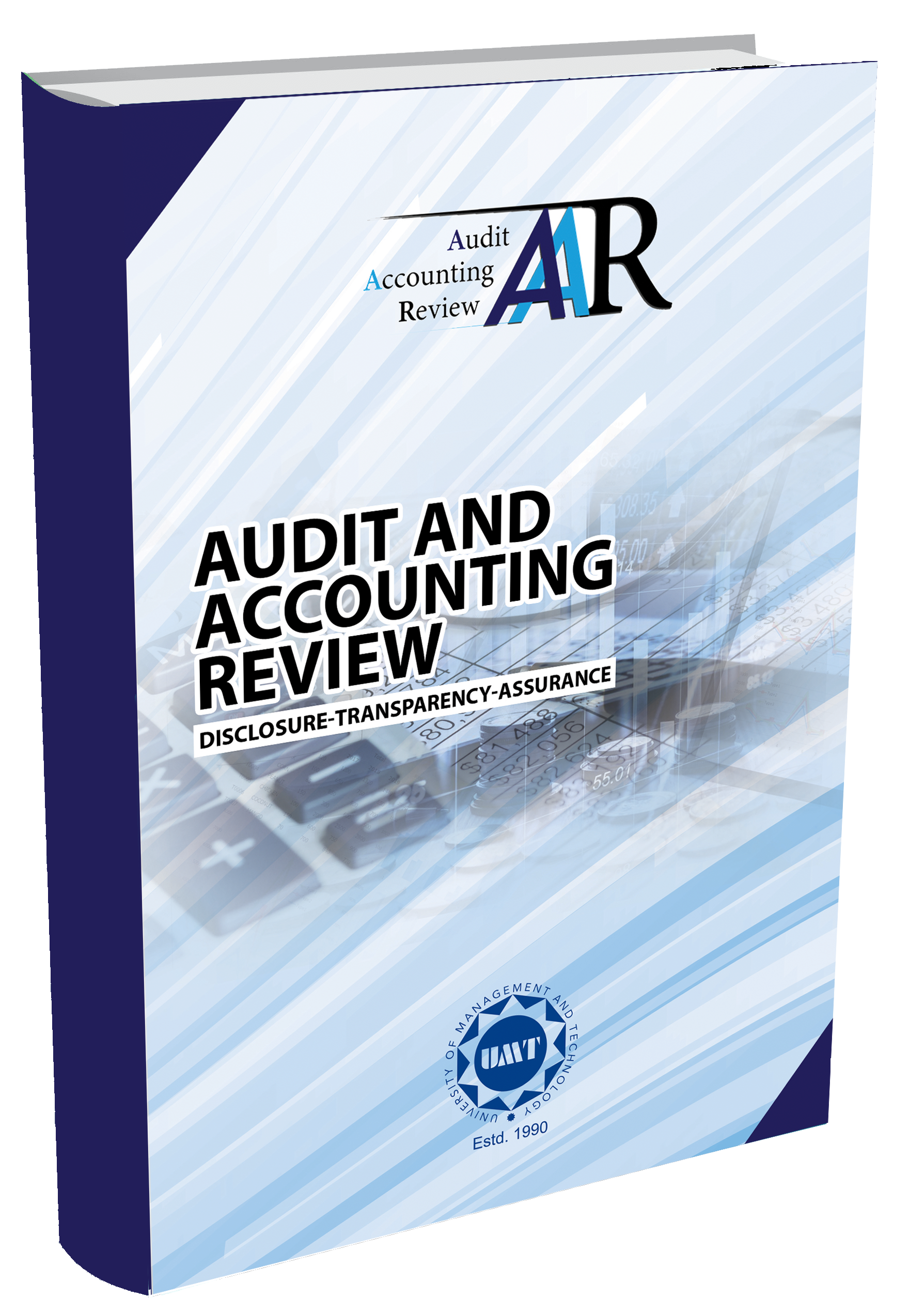Cash Flows or Profitability Measures: Which are Better Stock Return Predictors?
Abstract
 Abstract Views: 220
Abstract Views: 220
In this article, we examine the relative ability of cash flows and profitability measures to predict stock returns; whereas, the primary objective of this study is to identify which among the aforementioned predictors have a better stock prediction ability. For this purpose, we used five-year data (from 2014 to 2018) of 50 non-financial firms listed on the Pakistan Stock Exchange. We used cash flow from operations and cash flow after financing activities as cash flow measures and gross profit, operating profit, and earnings per share as profitability measures. The technique of panel regression was used in this study. We found that for stock return predictions, profitability measures provide better prediction results than cash flows.
Keywords: cash flow from operations (CFO), cash flow after financing activities (CFAF), predictions, profitability, stock returns
Downloads
References
Akbas, F., Jiang, C., & Koch, P. D. (2017). The trend in firm profitability and the cross-section of stock returns. The Accounting Review, 92(5), 1−32. https://doi.org/10.2308/accr-51708
Bala, S. A. (2017). The Relationship between Cash Flows and Stock Returns: An empirical study of financial investment banks on the khartoum stock of exchange. Applied Finance and Accounting, 3(2), 14−19. https://doi.org/10.11114/afa.v3i2.2236
Ball, R., Gerakos, J., Linnainmaa, J. T., & Nikolaev, V. V. (2015). Deflating profitability. Journal of Financial Economics, 117(2), 225−248.
Bouchaud, J. P., Krueger, P., Landier, A., & Thesmar, D. (2019). Sticky expectations and the profitability anomaly. The Journal of Finance, 74(2), 639−674. https://doi.org/10.1111/jofi.12734
Chiah, M., Chai, D., Zhong, A., & Li, S. (2016). A Better Model? An empirical investigation of the Fama–French five‐factor model in Australia. International Review of Finance, 16(4), 595−638. https://doi.org/10.1111/irfi.12099
Clacher, I., De Ricquebourg, A. D., & Hodgson, A. (2013). The value relevance of direct cash flows under international financial reporting standards. Abacus, 49(3), 367−395.
Farshadfar, S., & Monem, R. (2013). Further evidence on the usefulness of direct method cash flow components for forecasting future cash flows. The International Journal of Accounting, 48(1), 111−133. https://doi.org/10.1016/j.intacc.2012.12.001
Foerster, S., Tsagarelis, J., & Wang, G. (2017). Are cash flows better stock return predictors than profits? Financial Analysts Journal, 73(1), 73−99. https://doi.org/10.2469/faj.v73.n1.2
Hammerschmid, R., & Lohre, H. (2018). Regime shifts and stock return predictability. International Review of Economics & Finance, 56, 138−160. https://doi.org/10.1016/j.iref.2017.10.021
Hardan, S. A., Majed, A., & Aymen, M. (2016). The preference of direct or indirect metthods in preparing the statement of cash flows in decision making: An acadamic perspective. International Journal of Economics and Finance, 8(2), 206-214.
Hirshleifer, D., Hou, K., & Teoh, S. H. (2009). Accruals, cash flows, and aggregate stock returns. Journal of Financial Economics, 91(3), 389−406. https://doi.org/10.1016/j.jfineco.2007.11.009
Hou, K., & Van Dijk, M. A. (2018). Resurrecting the size effect: firm size, profitability shocks, and expected stock returns. The Review of Financial Studies, 32(7), 2850−2889.
Kim, M., & Kross, W. (2005). The ability of earnings to predict future operating cash flows has been increasing—not decreasing. Journal of Accounting Research, 43(5), 753−780. https://doi.org/10.1111/j.1475-679X.2005.00189.x
Livnat, J., & Zarowin, P. (1990). The incremental information content of cash-flow components. Journal of Accounting and Economics, 13(1), 25−46. https://doi.org/10.1016/0165-4101(90)90066-D
Lorek, K. S., & Willinger, G. L. (1996). A multivariate time-series prediction model for cash-flow data. Accounting Review, 71(1), 81−102.
Lorek, K. S., & Willinger, G. L. (2009). New evidence pertaining to the prediction of operating cash flows. Review of Quantitative Finance and Accounting, 32(1), 1−15.
Nallareddy, S., Sethuraman, M., & Venkatachalam, M. (2018). Earnings or cash flows: Which is a better predictor of future cash flows. Available at SSRN 3054644. https://www.hbs.edu/faculty/Shared%20Documents/ conferences/2018-imo/NSV%20HBS.PDF
Novy-Marx, R. (2013). The other side of value: The gross profitability premium. Journal of Financial Economics, 108(1), 1−28. https://doi.org/10.1016/j.jfineco.2013.01.003
Orpurt, S. F., & Zang, Y. (2009). Do direct cash flow disclosures help predict future operating cash flows and earnings? The Accounting Review, 84(3), 893−935. https://doi.org/10.2308/accr.2009.84.3.893
Pyun, S. (2019). Variance risk in aggregate stock returns and time-varying return predictability. Journal of Financial Economics, 132(1), 150−174. https://doi.org/10.1016/j.jfineco.2018.10.002
Zhao, Y., Li, J., & Yu, L. (2017). A deep learning ensemble approach for crude oil price forecasting. Energy Economics, 66, 9−16. https://doi.org/10.1016/j.eneco.2017.05.023
Copyright (c) 2021 Ahmed Noor-Ud-Din, Burhan Rasheed, Zohair Farooq Malik, Syed Taha Fraz Haider Kazmi, Amer Shakeel

This work is licensed under a Creative Commons Attribution 4.0 International License.
Authors retain copyright and grant the journal right of first publication with the work simultaneously licensed under a Creative Commons Attribution (CC-BY) 4.0 License that allows others to share the work with an acknowledgement of the work’s authorship and initial publication in this journal.







